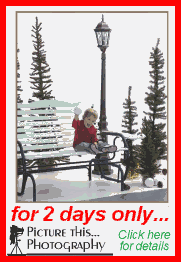|
"While the holiday season is a favorite time of year for so many,
it's also the time when we see many home fires that could have been
prevented with a little caution," Blagojevich said. "We want people
to know the simple -- but important -- steps that can keep them safe
throughout the winter and holiday season." The Office of the State
Fire Marshal's effort to increase awareness about home heating and
holiday fire safety dangers is part of Blagojevich's Keep Warm
Illinois campaign, a comprehensive effort to inform and prepare
Illinois residents for winter with information on energy assistance,
home weatherization and winter safety tips. For more information,
visit www.keepwarm.illinois.gov or call 877-411-WARM (9276).
"The State Fire Marshal's Office is pleased to once again join
with Governor's Blagojevich's Keep Warm Illinois campaign to help
people stay safe and warm this winter," said State Fire Marshal Dave
Foreman. "We don't want anyone's holiday celebrations to be ruined
by a tragic fire. And even after the holiday season is over, people
still need to play it safe when heating their homes."

According to the National Fire Protection Association, heating
equipment was involved in an estimated 45,000 structure fires in
2002 in the U.S., resulting in 220 deaths, 990 injuries and $449
million in direct property damage. Portable and fixed space heaters,
including wood stoves, were involved in 25 percent of the home
heating fires but caused 74 percent of the deaths.
Holiday decorations create additional fire hazards during
December. The National Fire Protection Association reports that in
2002 there were 240 Christmas tree home fires nationwide, resulting
in 23 deaths, 12 injuries and $11.4 million in property damage.
Nearly twice as many candle fires generally occur during December
than any other month of the year, with Christmas the peak day for
candle fires.
Space heaters
-
Many fires related
to space heaters are caused by combustibles placed too close to
the heater. Always keep a 36-inch clearance between space
heaters and anything that can burn.
-
Portable space
heaters should be turned off every time you leave the room or go
to bed.
-
When buying a new
space heater, make sure it carries the mark of an independent
testing laboratory.
-
Have fixed space heaters, such as
wood-burning stoves, installed by a qualified technician and
according to manufacturer's instructions or applicable codes. If
your home already has a fixed space heater, have a qualified
technician check to see that the unit has been properly
installed.
Fireplaces
-
Fireplaces and
chimneys cause more than 40 percent of fires, most due to
creosote buildup.
-
Wood and coal
stoves, fireplaces, chimneys, chimney connectors and all other
solid-fueled heating equipment should be inspected annually by a
professional and cleaned as often as inspections suggest.
-
Use properly
seasoned wood in fireplaces or wood stoves. Green wood has more
moisture and is likely to smolder, leading to more creosote
buildup. A moisture content of 20 percent to 25 percent is
recommended, as wood that is too well-seasoned may also result
in creosote buildup.
-
Fireplaces should
have a sturdy screen to prevent sparks from flying into the
room.
-
Allow fireplace and woodstove ashes to
cool before disposing of them in a metal container.
[to top of second column]


 |
 Furnaces
- Furnaces also should be checked every year by professionals
to ensure mechanical parts are functioning properly and that
nothing is blocking the flue. Such inspections will help keep
energy costs down as well as ensure the safety of the home's
occupants. Malfunctioning furnaces increase both fire and carbon
monoxide risks.
Christmas trees
-
Live Christmas
trees dry out quickly once they're brought into a home, and a
dry Christmas tree can quickly go up in flames if proper caution
isn't observed.
-
When buying a live
Christmas tree, select a freshly cut tree or one that hasn't
been on the sales lot for very long.
-
Position the live
tree at least three feet away from any heat source.
-
Refill water in the
tree stand regularly.
-
Never use candles to decorate a tree,
and keep all candles away from the tree.
Candles
-
Place candles on
stable furniture, in sturdy holders that will catch dripping
wax.
-
Never leave a
candle unattended.
-
If the power goes
out, use flashlights for illumination, not candles.
-
Keep candles away
from all things that can catch fire.
-
Place candles on
higher furniture, where they won't be knocked over by children
or pets.
-
Never place lit
candles in windows, where they could ignite blinds or curtains.
-
Don't allow
children or teens to have candles in their bedrooms.
-
Extinguish candles carefully, using a
long-handled candle snuffer or a soft, directed blow. Be careful
not to splatter wax when extinguishing.

Lighting and decorations
-
Use caution with
holiday decorations, and whenever possible, choose those made
with flame-resistant, flame-retardant or noncombustible
materials.
-
Purchase only
lights and electrical decorations bearing the name of an
independent testing lab, and follow the manufacturer's
instructions for installation and maintenance.
-
Do not overload
extension cords.
-
Check your strands
of lights to determine the number of strands that may be
connected.
-
Don't mount lights
in any way that can damage the cord's wire insulation. For
example, use clips, not nails.
-
Turn off all light strings and
decorations before leaving the house or going to bed.
Smoke and carbon monoxide detectors
-
Every home should
have working smoke and carbon monoxide detectors, which should
be tested monthly to ensure they're functioning and the
batteries are still good.
-
As of Jan. 1, a new
state law will require that carbon monoxide detectors be
installed within 15 feet of each sleeping area in homes and
apartments. This requirement is similar to one already in effect
for smoke detectors.
-
Never use your oven
to heat your home.
-
Never use a gas or charcoal grill
inside your home or attached garage.
For more information about fire safety, visit
www.state.il.us/osfm.
The Keep Warm Illinois website, at
www.keepwarm.illinois.gov, offers various no-cost and low-cost
energy-saving tips, a Web-based tool to conduct a home energy audit,
links to energy assistance programs and other resources. In
addition, the Keep Warm Illinois toll-free line, 1-877-411-WARM
(9276), is another resource for Illinois residents to learn how to
save energy and get energy assistance.
[News release from the governor's
office] |